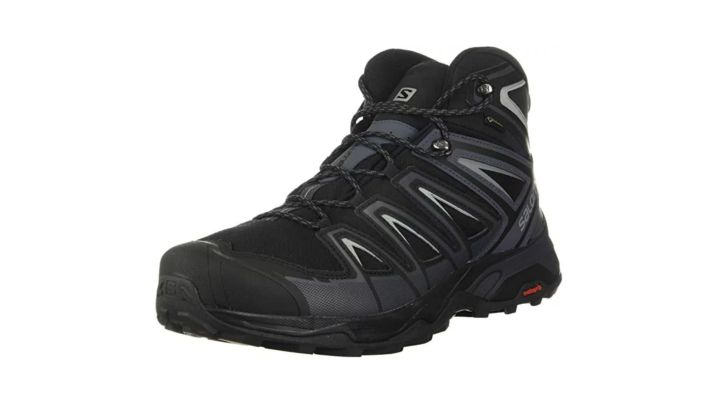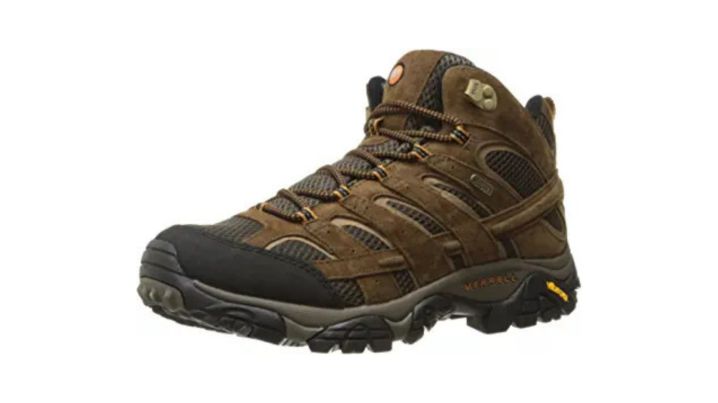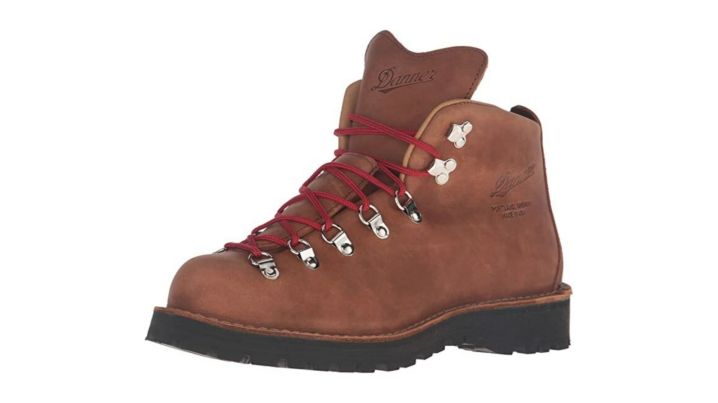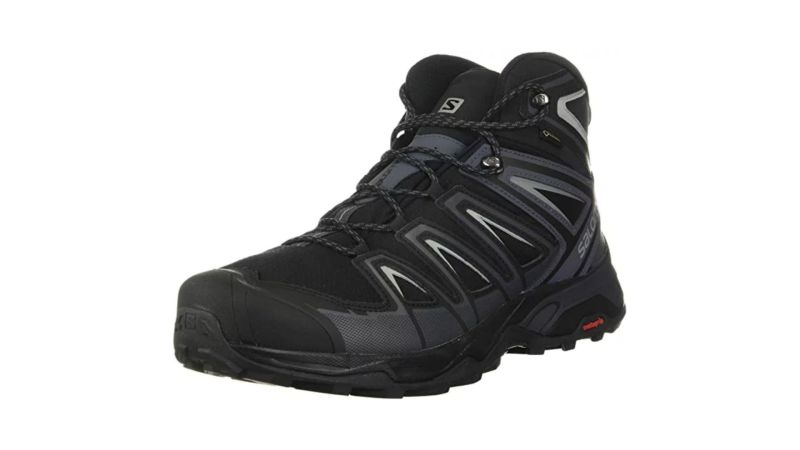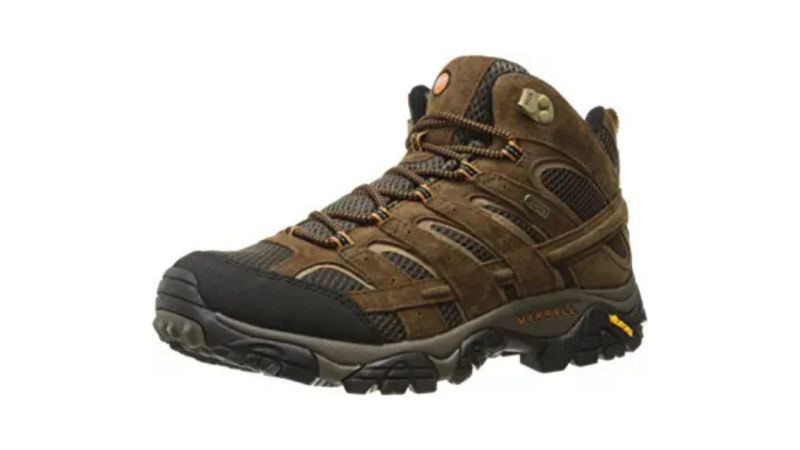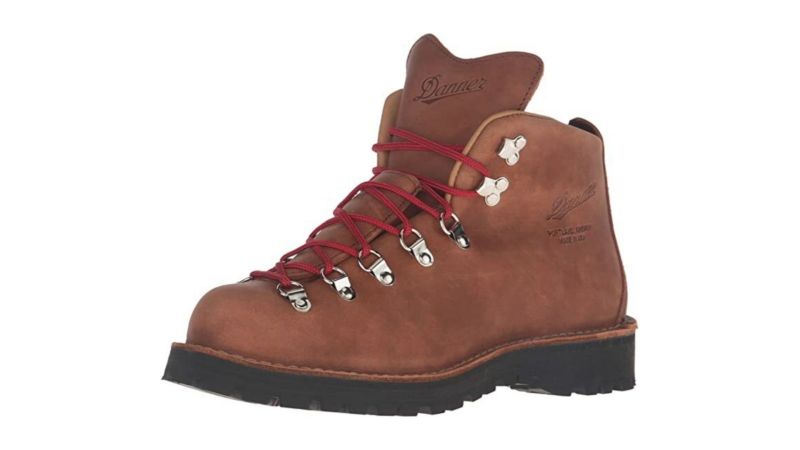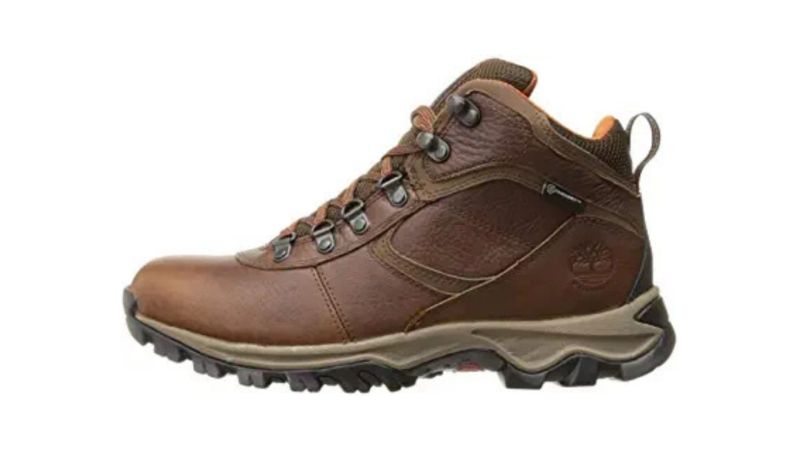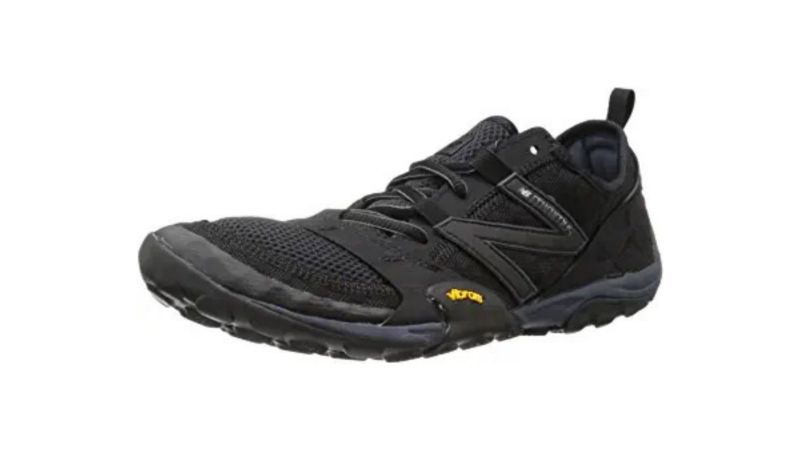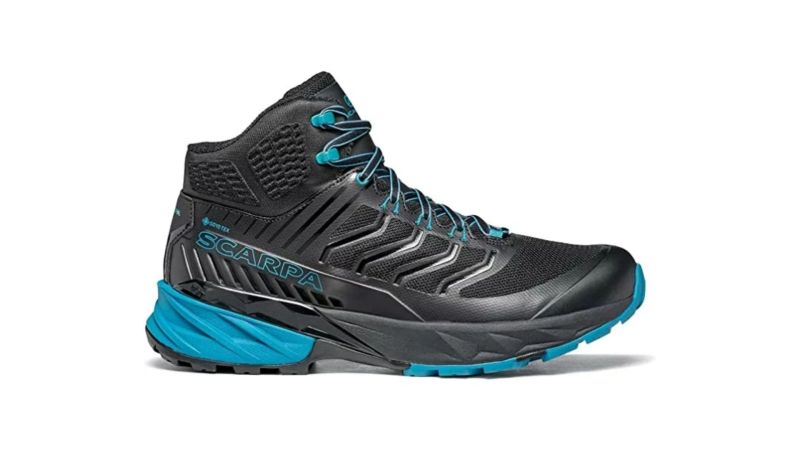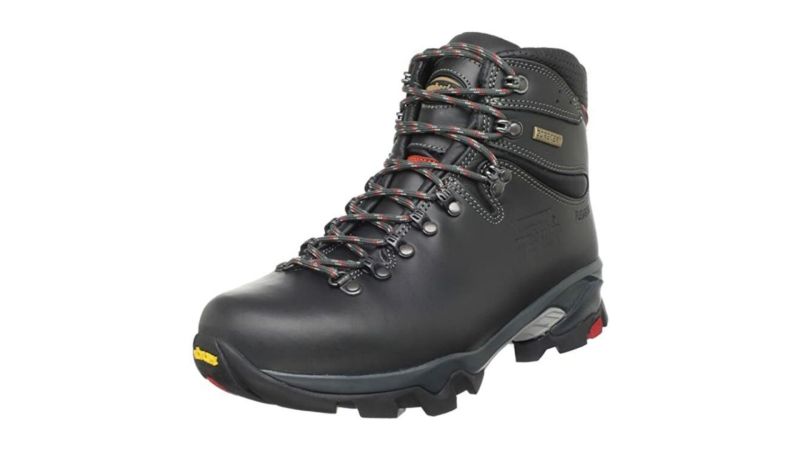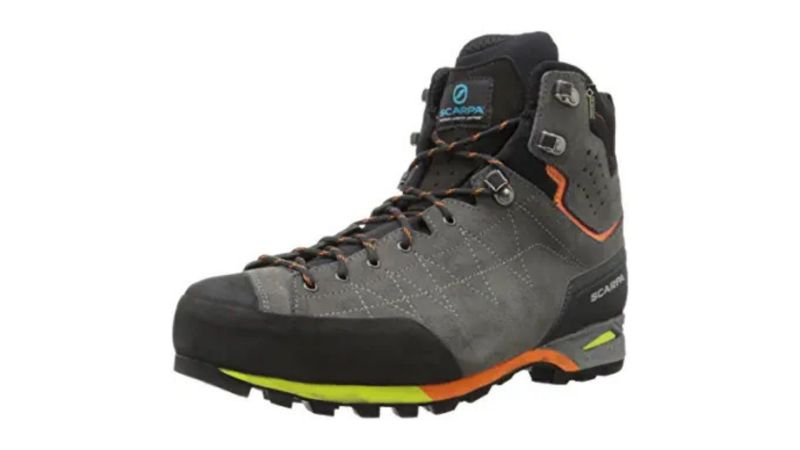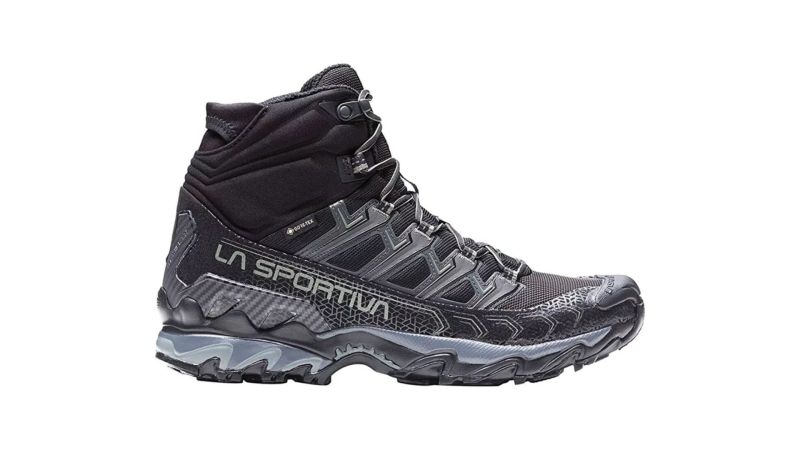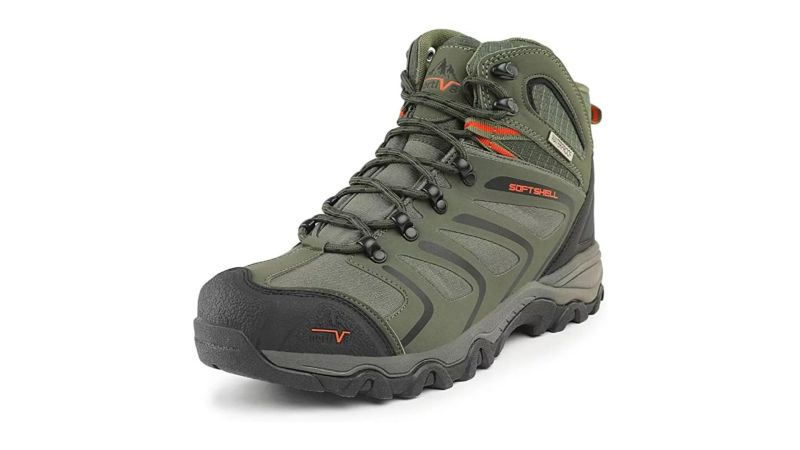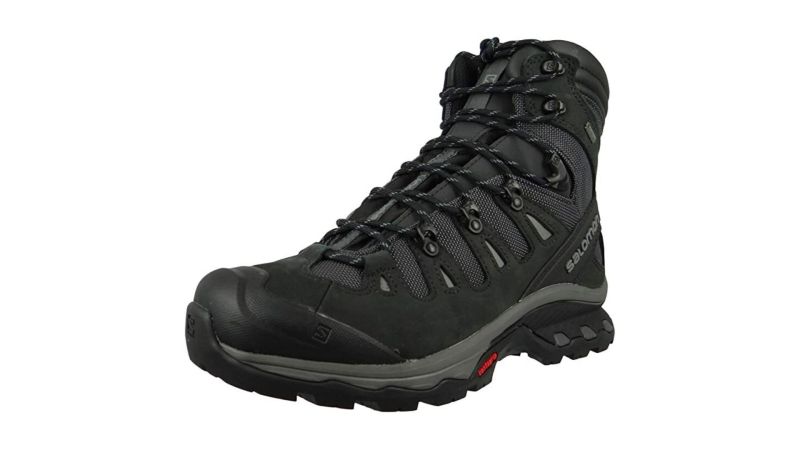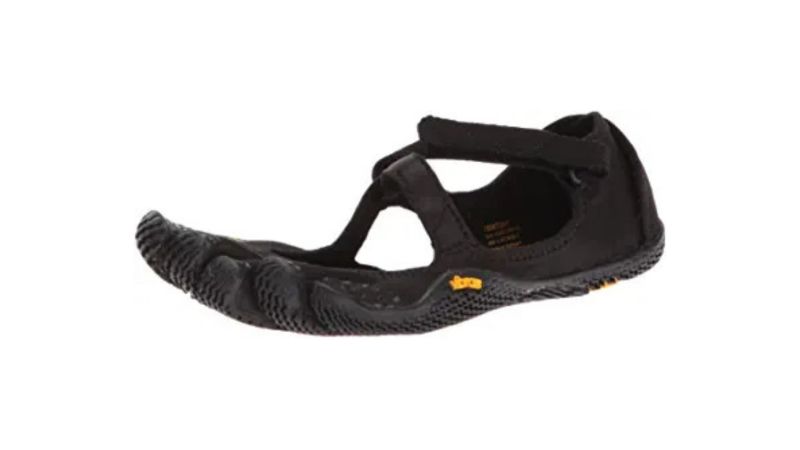We may earn revenue from the products available on this page and participate in affiliate programs.
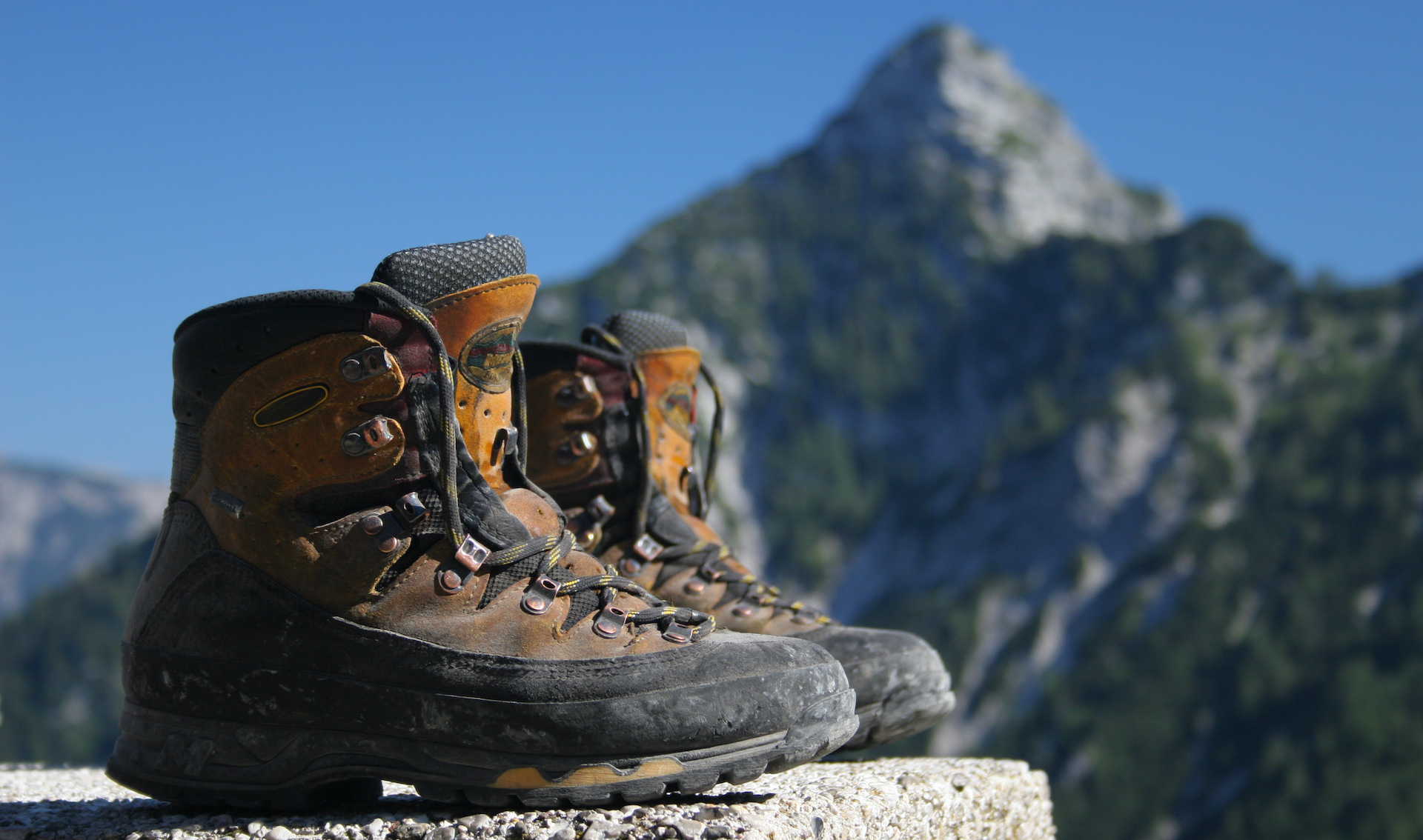
Hiking boots and I have a bit of a love-hate relationship. In the Marine Corps, I logged more miles in jungle boots and moon boots than I can keep track of (and maybe one or two ill-advised humps in the woefully unsupportive Bates Lites). I’m sure you can relate, and I’m happy to report that there are much better ways to hoof it from A to B.
The Task & Purpose review team tests all kinds of gear, and we have some accomplished hikers among us. I’m talking about people that hike the highest peaks, hottest deserts, and longest trails. The boots we’ve tested span from bargain-basement to top-of-the-line. Rather than leaving you to navigate all those gear guides on your own, we compiled a list of our favorites to save time and get you on the trail as soon as possible. There are some shoes and boots that we liked, but didn’t think would be a good choice for your dedicated hiking boot. We also have favorite packs, camping gear, and more knives than you can shake a freshly whittled stick at. All that can be found in our gear section.
As for the best hiking boots for your next overland excursion, here are our favorites.
Best Overall
Salomon X Ultra 3
Best Value
Merrell MOAB 2
Editor’s Choice
Danner Mountain Light Cascade Clovis
Best Day
Timberland Mt. Maddsen
Best Barefoot And Minimalist
New Balance Minimus 10 V1
Best Hiking Shoes
SCARPA Rush
Best Backpacking
Zamberlan 996 Vioz GT
Best Mountaineering
SCARPA Zodiac Plus
Best Lightweight
La Sportiva Ultra Raptor II
Best Midweight
Nortiv 8
Best Heavyweight
Salomon Quest 4D 3
Hiking Sandals
Vibram V-Soul
Trail-Running Shoes
Salomon Speedcross 4
Why you should trust us
We’ve assembled a crack team of gear testers who combine for decades of hiking experience–both under a standard-issue ruck and on their own. We know what it’s like to hump through the night with blood blisters and cut calluses off to make our boots fit again. Thanks to the wonders of the free market, we also know how good a quality pair of boots feels compared to worn-out combat boots.
Our gear experts conducted hands-on testing of every product you see here. These boots have forded cold mountain streams, slogged through mud, endured desert heat, and made mountain ascents that leave me gassed just from reading about them. Since we use the gear we test, our tolerance for shoddy products is basically nonexistent. If we include a pair of boots in this roundup, it’s because that boot has earned our respect the hard way.
Types of hiking boots
Hiking is a pretty broad term. Our own writers hike things like the Appalachian Trail and Mount Rainier. Some people hike the local park in less time than it takes their pumpkin spice latte to get cold. Those styles of nature walks require footwear with very different features. Price is another consideration. There’s no need to break the bank on boots for casual hikes, but more ambitious endeavors are worth springing for something high-end. We’re here to break down some of the main factors you need to evaluate.
Casual hiking boots
What’s on your feet right now? Unless you’re wearing combat boots, I’ll go out on a limb and guess that it’s something soft, lightweight, and flexible. That seems to be a winning recipe for comfort, so it’s how most shoes feel. Casual hiking boots are very similar. Since they don’t need to deal with heavy packs, uneven terrain, and slippery surfaces, this kind of hiking boot can prioritize short-term comfort. They’re great for weekend trips around the local trails, walking the dog, or going for even everyday use. Don’t push your luck, though, because they aren’t built to handle the kind of terrain and strain that comes with backpacking and serious climbing. Fortunately, they tend to be affordable and stylish enough to wear around town.
Traditional hiking boots
Traditional hiking boots up the ante with additional features that make them more wilderness-ready than casual hiking boots or trail running shoes. This meant using leather and chunky soles back in the day, but now we get to enjoy lightweight synthetics and more advanced tread patterns if we want. This style of boot costs more than something designed for fashion or casual hikes. Expect to pay at least $75, but potentially as much as $150 for a pair of dedicated hiking boots. For the extra money, you’ll get footwear that can support your ankles and feet on uneven terrain. More aggressive tread patterns will boost confidence in mud and loose dirt. Because they’re intended to have a rough and tumble service life, true hiking boots are also notably more durable and longer-lasting than budget options.
Backpacking boots
At the top of the hiking boot food chain are the apex predators that are backpacking boots. This style of boot is intended to do everything hiking boots do but under a heavy load. They need to provide enough structure to prevent you from rolling an ankle and be comfortable and supportive without getting packed out under load. They need to keep your feet dry because it might be days until you can get back to the trailhead and change into something else. Accomplishing all this can make a boot quite heavy, which is the last thing you want on a backpacking trip. Solving that problem involves advanced materials that cost a pretty penny, so it isn’t uncommon to see backpacking boots going for more than $200. They’re worth it for serious hiking, though. Get a few days into a week-long backpacking trip, and I bet you’ll agree.
Key features of hiking boots
Supportive uppers
Keeping your bones from rattling against each other is a top priority of hiking boots. One of the most common problems you’ll face on the trail is a rolled ankle. That’s right; not bears, not avalanches, not undiscovered cannibal civilizations. There’s a good chance you could ruin the whole experience by being bad at walking. Hiking boots wrap around the ankle to promote proper alignment and provide support in the event that a root sneak attacks you.
Down below, hiking boots also need to support your foot itself. Have you ever tried hiking in normal sneakers? It’s not pretty. Foam padding that’s soft and supple on hard floors is basically useless in the wild. What you thought was comfortable will actually leave your feet aching and blistered. Hiking boots are much firmer and keep your foot firmly in place so it can move effectively without sliding around.
All-terrain traction
Of course, keeping your feet comfortable and safe doesn’t do much good if you don’t have traction. A good tread pattern is key. Just like mud tires on a rugged off-roader, hiking boots can chew into loose surfaces and fling debris clear of the tread to get it ready for the next step.
The material hiking boot soles are made of matters, too. Most rubbers and plastics get stiff in cold temperatures and gooey in hot temperatures. Neither is good for traction, so hiking boots use purpose-built compounds that remain strong and grippy in all kinds of weather. Vibram is one of the most popular third-party makers of outsoles, but there are plenty of other quality options to choose from.
Water resistance
The whole point of hiking is getting further into the wild, so you’re going to get wet sooner or later. Maybe you’ll get caught in a downpour; maybe you’ll encounter a stream crossing. Either way, having wet feet is uncomfortable at best and potentially deadly in extreme circumstances. Your best line of defense is a hiking boot with waterproof protection. Quality hiking boots will let you walk right through standing water without so much as a drop reaching your feet. Others might get wet but can dry quickly. Which you choose will largely depend on where you hike. Sometimes getting wet is just part of the game, and your priority should be drying your gear overnight. In cold climates, you need to avoid moisture altogether. There are examples of each on this list.
Benefits of hiking boots
Comfort and injury prevention
Hiking boots wouldn’t be anyone’s first choice for lounging around the house or sitting at a desk, but make no mistake–comfort is key. Hiking boots need to be supportive and cushioned. If they’re not, you can expect rolled ankles and aching feet. They need to be breathable so you don’t end up with hot spots and sweaty socks. Maybe more than all of that, they need to fit properly to avoid blisters. Comfort may take a different meaning for hiking boots than for fuzzy house shoes, but it’s even more important. One of the best things you can do is adequately break in your boots a little at a time before embarking on a long hike so they can be at their best. While you’re at it, don’t forget about using the right hiking socks.
Longevity
I’ve done plenty of hiking in shoes that are less than ideal; that’s partly because I’m cheap and partly because I prefer lightweight gear. The problem is that, in addition to giving my body less support than I would have gotten from a hiking boot, my hiking shoes didn’t last very long. They just couldn’t keep up with the abuse and broke down too soon. The treads didn’t offer much grip, to begin with, and they wore smooth surprisingly quickly. Hiking boots are built to a different standard and typically last much longer than a hiking shoe or trail running shoe. That means your feet are better taken care of, and it saves you money in the long run.
Keeping hiking fun
When you take care of your body and save money, you take a lot of stress out of hiking. It starts to be fun again. When you aren’t distracted by blisters and sore knees, you can focus on the scenery and the people you’re with. Isn’t that what hiking is about? Sure, you can slog through a hump on hardball. You can get the job done in a pair of sneakers. But you’ll also spend the next few days eating ibuprofen like cereal and going through ice faster than a climate change documentary. I can’t do much to improve your battalion hikes, but I can make your recreational hiking more enjoyable. Do yourself a favor and use a hiking boot from this list to make hiking something to smile about.
Pricing considerations for hiking boots
Less than $75
Hiking boots are a lot like toilet paper–neither is something you should really cheap out on. Hiking boots in the sub-$75 range are either on sale or made some significant compromises in the name of cost savings. There are a few solid, money-saving options in this category, but it’s best to stick to the established brands to avoid trashing your feet with something that was only intended to perform in a product photo. We certainly respect the need to save money, so we made sure to represent this price range on our list with a boot that can get the job done without breaking the bank. It’s one of the good ones.
Between $75 and $150
This is the sweet spot, folks. Most hiking boots fall in the $75 to $150 price range. This is where you’ll find the big-name brands, modern materials, and features that are backed by legitimate research and development. Boots in this category are lightweight enough for work, short hikes, and even daily use. They’re also robust enough to rack up miles of trail at a time. They’re also great options for other outdoor activities like hunting and fishing. Extreme adventures like massive through-hikes and severe climbs might be more than you’d want to try in these boots, but they’re solid choices for everything else.
More than $150
Buying your way into the world of premium hiking boots will get you access to cutting-edge technology, lightweight materials that are still incredibly durable, and top levels of comfort. This isn’t cheap; expect to pay at least $150 and don’t be surprised if you break the $200-mark. If you do any amount of backpacking, this is probably where you’ll want to shop. Heavy packs and days of hiking can push normal hiking boots beyond their limits, but something designed for backpacking will handle the added stress without missing a beat. If you measure your hikes in days rather than miles, this is the category for you.
How we chose our top picks
How does a piece of gear make it onto our list? That’s simple — by earning enough of our trust to make us want to use it ourselves. We test a lot of gear. Some of it sticks around and becomes a staff favorite, and some of it can’t get sent on its way fast enough. We let you know either way, but these roundups are a great way to find the best of the best all in one place.
In addition to performing well as a hiking boot, we like to sniff out deals for you. There’s no reason to spend more than you need to. Budget options and premium picks make their way to the list, too, but products that pack a ton of value into a small price tag are popular with us. Finally, we like to find products that stand out from the crowd. If a boot offers a particularly interesting feature or offers a unique advantage, that’s something we want you to know about.
FAQs on hiking boots
You’ve got questions, Task & Purpose has answers.
Q: Should hiking boots be a size bigger than your usual shoe?
A: Sizing is personal. Generally speaking, order hiking boots the same way you order running shoes or work boots, keeping an eye out for brands that run large, small, narrow, or wide. The only caveat I’d offer is that people who hike in thick wool socks might need to account for the extra material by going one half-size up. There are plenty of modern hiking socks that can keep you warm and dry without being bulky, so this is a matter of personal taste.
Q: Do hiking boots stretch?
A: Leather boots will break in to become more supple and adjust to the shape of your foot. I wouldn’t go so far as to say they stretch, though. Most hiking boots use a combination of synthetic materials, though, so you can expect your hiking boots to fit basically the same throughout their service life.
Q: Can I wear hiking boots for regular walking?
A: Absolutely. Being over-geared is a lot less problematic than being under-geared. Because of their price, I wouldn’t recommend buying hiking boots specifically for walking, but there’s no reason you couldn’t lace up your hiking boots for a walk every now and then between camping trips. In fact, that’s a great way to break them in.
Q: Do I need to spend a lot of money on hiking boots?
A: Not necessarily. Most of us can have a blast with an entry-level or midrange pair of hiking boots. Plenty of up-and-coming manufacturers and established brands offer affordable hiking boots that pack a ton of value. That being said, if you’re planning on climbing a 14er or hiking one of the National Scenic Trails you need to invest in something that’s up to the challenge.
Q: How long should hiking boots last?
A: Hiking boot life is probably best measured in miles, not years. Even then, there can be a huge amount of variation depending on the type of terrain you cover, the amount of weight you carry, and the amount of moisture your boots are exposed to. If you start with a quality item and take care of your boots, you can expect to get several hiking seasons out of them. At that point, rotate them into duty for yard work to stretch your dollar even further.
Our gear section
Scott Murdock is a Marine Corps veteran and contributor to Task & Purpose. He’s selflessly committed himself to experiencing the best gear, gadgets, stories, and alcoholic beverages in the service of you, the reader.
